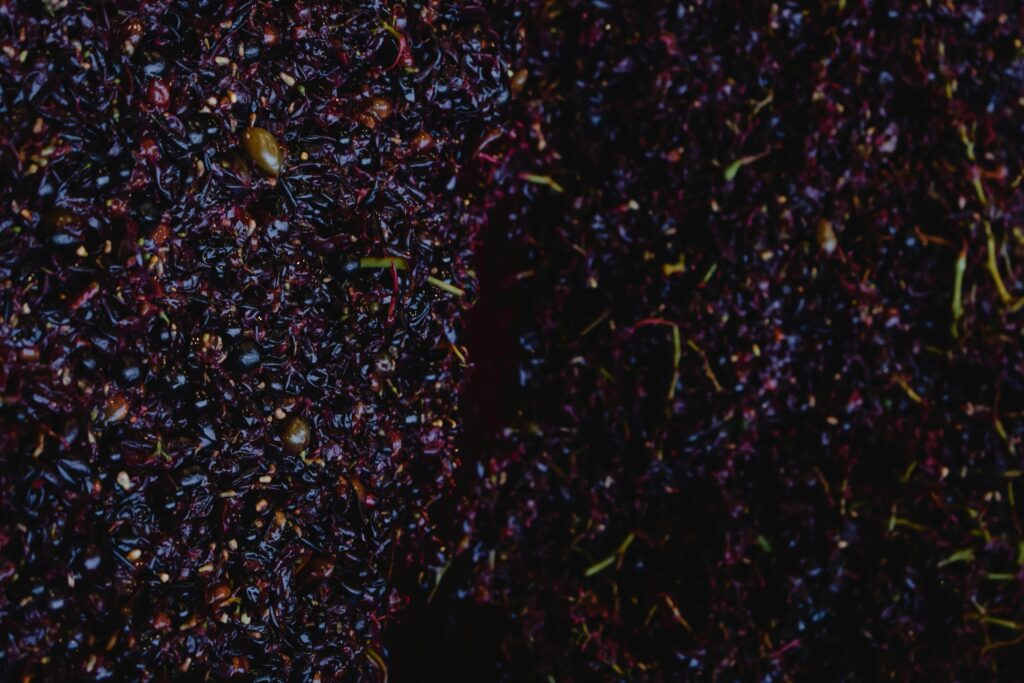The enchanting wine aromas originate from several key sources, primarily the grapes themselves, the intricate winemaking process, and the gradual maturation or aging of the wine over time. Each stage contributes to the complex bouquet that delights the senses. Importantly, these aromas are entirely natural; no artificial flavorings or additives are infused into the wine. This purity accentuates the essence of the wine, ensuring that the flavors and scents reflect the true character of the grapes and the craftsmanship of the winemaker.
To effectively describe these aromas and fully appreciate their nuances, it is crucial to delve into their origins. Understanding where these scents come from, how they develop during various phases of production, and the factors that influence their characteristics is essential.
Furthermore, the classification of these aromas into categories—such as primary, secondary, and tertiary—helps in identifying the complexity of a wine’s profile. Each category reveals different layers of the wine’s identity, whether they stem from the grape variety, the fermentation process, or the conditions of aging in the barrel or bottle.
Ultimately, the aromas convey a unique message about the wine’s journey from vineyard to glass. They tell the story of the terroir—the specific environmental conditions that impart particular qualities to the grapes—as well as the careful decisions made by the winemaker throughout the process.
By embracing this understanding, we can enrich our enjoyment of wine, appreciating not just the taste but also the intricate narrative woven through its aromas, thus allowing each sip to evoke a deeper connection to its origins and the artistry behind its creation.
Wine and friends are a great blend.
-Ernest hemingway
Jump To Section
How to Identify Wine Aromas
You can also watch this and other exclusive GA Originals on YouTube. Click on the video and subscribe to our channel.
Humans experience and perceive flavors through a combination of taste and the intricate stimulation of olfactory cells, which are critical to our overall sensory experience. The complex interplay between the senses of smell and taste allows us to enjoy an array of flavors and aromas, enriching our food and beverage experiences in profound ways. This synergy is particularly evident when we explore the realm of wine, where each sip becomes a sensory journey.
From the very moment we encounter an olfactory stimulus, our brains embark on the process of identifying the various aromas present in the wine. When we swirl a glass of wine, aroma molecules are released into the air, where they begin to vaporize and travel toward the nasal cavity.
Due to their hydrophilic nature, these aroma molecules are naturally attracted to the water molecules found in the olfactory mucosa—a specialized tissue that lines the nasal cavity and is rich in olfactory cells. These olfactory cells, capable of detecting a wide range of scents, play an essential role in our ability to perceive aromas.
Upon detection of these aroma molecules, the olfactory cells generate electrical impulses that are transmitted to the nervous system. These impulses pass through the olfactory bulb, a crucial part of the brain where the initial processing and elaboration of smell impressions occur. As the impulses navigate deeper into the brain, they arrive at the olfactory cortex, where complex operations take place.
This is where we discriminate between different olfactory impressions, allowing us to interpret, recognize, and even memorize those scents we encounter. It is also in this region of the brain where the language of smell is formed, enabling us to articulate and describe the aromas we have identified.
When it comes to wine, the aromas can be classified into three distinct categories: Primary, Secondary, and Tertiary aromas. Primary aromas are the first fragrances we typically notice and originate from the grapes themselves. These aromas often evoke fresh, citrus, and tropical fruit scents, as well as delicate floral notes.
They are essentially natural compounds derived from the plant, such as methyl anthranilate, which gives off a strawberry-like aroma; ionone beta, which produces a beautiful violet scent; and IBPM-isobutyl-methoxypyrazine, commonly known as Pyrazine, which brings about the distinctive aroma of green bell pepper.
By understanding the sensory mechanisms at play in aroma perception and the unique categories of aromas in wine, we gain a deeper appreciation for the complexity of wine tasting. This multifaceted approach not only enhances our enjoyment of wine but also opens the door to a richer understanding of the intricate flavors and aromas that contribute to our overall sensory experience.
Aroma Classification
Primary aromas

The primary aromas found in wines are intricately connected to the concept of terroir, which encompasses several key environmental factors such as soil type, climate, and topography. These elements work in harmony to influence the characteristics of the grapes grown in a particular region, ultimately impacting the sensory profile of the wine produced from them.
Additionally, the timing of the harvest and the specific conditions under which the grapes reach their optimal ripening point play a significant role in enhancing and promoting the expression of these aromas.
Typically, these primary aromas are most prominent in young wines, as they capture the vibrant essence of the grapes before they undergo the complex processes of aging. Certain grape varieties, such as Moscatel and Gewurztraminer, are especially renowned for their distinctive aromatic profiles, making them excellent examples of how the interplay of terroir and viticultural practices can lead to remarkable sensory experiences in wine.
By understanding these factors, wine enthusiasts can appreciate the unique qualities that each varietal and vintage brings to the table, deepening their connection to the world of wine.
Secondary aromas

The secondary aromas found in a wine are a fascinating aspect of its overall complexity, and they emerge as a result of the yeasts that are actively working during the fermentation process. These yeasts play a crucial role in transforming grape juice into wine, and in doing so, they create a rich tapestry of chemical compounds that contribute to the wine’s aromatic profile.
Among these secondary aromas are various dairy notes, which can evoke the comforting scents of milk, yogurt, fresh butter, and a delightful range of cheeses. These aromas add layers of creaminess and richness, enhancing the overall mouthfeel of the wine.
In addition to the dairy notes, the fermentation process also imparts a range of fermented scents that are equally intriguing. These include the inviting aromas of toasted bread, bread crumbs, toast, and brioche.
These aromas not only contribute to the wine’s complexity but also can evoke images of freshly baked goods, offering a warm and comforting sensation that can be reminiscent of a cozy bakery.
The interplay between these secondary aromas and the primary fruit characteristics creates a multi-dimensional experience for wine enthusiasts, allowing them to appreciate the craftsmanship behind each bottle.
Overall, the yeasts’ influence during fermentation is a vital component that deepens the layering of aromas and flavors, resulting in a wine that is not only rich and engaging but also tells a story of its origin and production.
Tertiary aromas

The tertiary aromas of fine wines play a crucial role in shaping their overall character and complexity. These aromas are primarily influenced by the aging process in oak barrels, which not only impart aromatic compounds and essential tannins but also enhance the wine’s elegance and depth. The interaction between the wine and wood facilitates micro-oxygenation, a process that helps stabilize the wine by allowing it to gently breathe, thereby decanting suspended solids and contributing to a smoother mouthfeel.
Among the most prevalent tertiary aromas, we find the distinct scents of wood, which can manifest in various ways, including notes reminiscent of cedar, pine, or even sandalwood. Dried fruits, such as figs, raisins, and apricots, often emerge as the wine evolves, offering a rich sweetness that complements the structure of the wine. Additionally, earthy aromas reminiscent of organic matter can surface, grounding the wine in its terroir and adding layers of complexity.
Spices, particularly notes of black pepper and vanilla, can also be prominent, contributing to a nuanced flavor profile that adds interest and intrigue. More complex notes may reveal themselves as the wine ages; nuances like honey and minerality can tell a story of the vineyard’s geographical and geological characteristics, while empyreumatic aromas may evoke associations with smoke, roasted coffee, dark chocolate, and even the subtleties of cigars.
These intricate aromas are not merely random; they serve as an essential key to understanding the wine’s identity. Through the careful examination of these scents, one can glean important information, such as the type of grape used, the specific terroir from which it originates, and whether the wine underwent maturation in oak barrels.
The ability to identify and appreciate these details requires a trained nose, one that can discern the intricate interplay of aromas that define each unique bottle. In essence, the journey of exploring tertiary aromas is as much about appreciation of the wine’s artistry as it is about understanding the science behind its creation.
Bottom Line
Wine aromas originate from several primary sources that significantly influence flavor perception and the overall tasting experience. These aromas can be identified at various stages of wine production, from the grape through the winemaking and aging processes. Recognizing aromas is a vital aspect of wine appreciation, as they can shape how the wine is perceived and evaluated.
Wine aromas are generally classified into three main categories: primary, secondary, and tertiary. Primary aromas are those that come directly from the grapes and are closely related to the grape variety, encompassing fruity and floral notes. Secondary aromas result from changes that occur during the winemaking process, such as fermentation, which can produce yeasty or buttery notes. Tertiary aromas develop during the aging of the wine, both in barrels and bottles, and include complex notes such as spices, earth, and more evolved olfactory characteristics that reflect maturation time.
Thus, understanding the origin and classification of aromas not only enhances our appreciation of wine but also enriches our sensory experience with each glass. This aspect becomes particularly fascinating for enthusiasts and professionals in the field, who seek to explore and discover the complexity that each wine’s unique aromatic composition can offer.
Did you like this article?
I hope this article has helped you improve your skills. To learn more, take a look at Sauvignon Blanc: The Enthusiast’s Guide To Wine Lovers.
Leave a comment below and share our content. Help our community grow by following our social media on Spotify, Instagram, Facebook, YouTube, and TikTok. And stay up to date with the news from the world of Gastronomy.
Don’t forget to tag @gastrovinoacademy on Instagram and hashtag it #gastrovinoacademy.
Cheers 🍷



I was pretty pleased to discover this web site. I want to to thank you for your time for this fantastic read!! I definitely really liked every bit of it and I have you book marked to see new things on your web site.